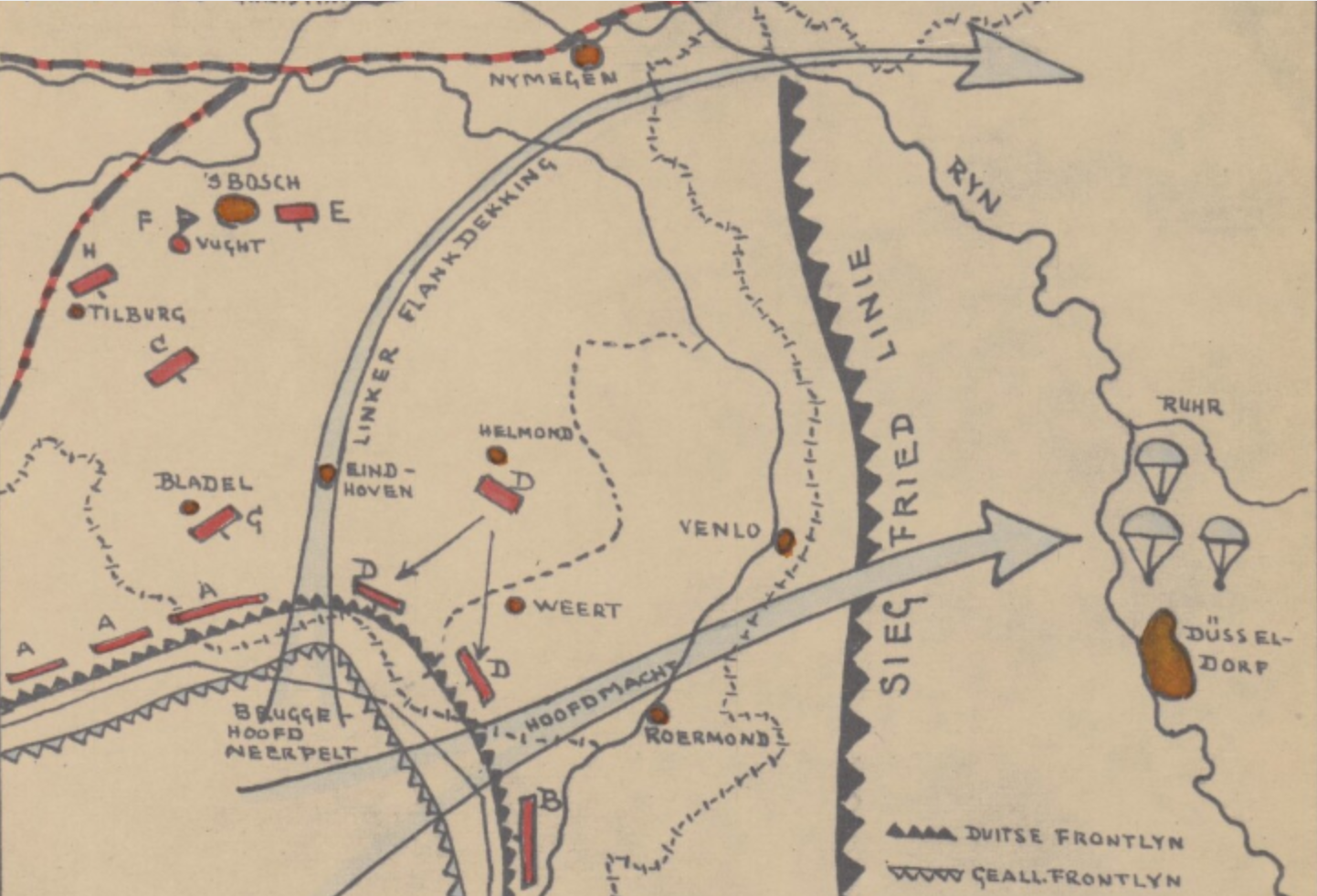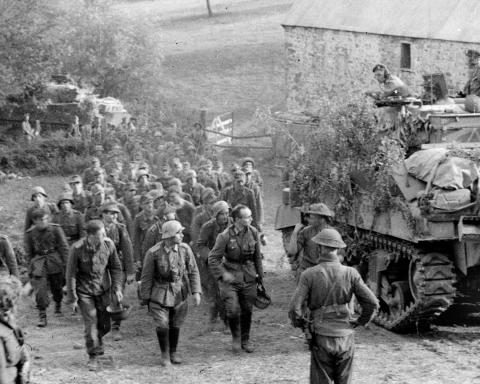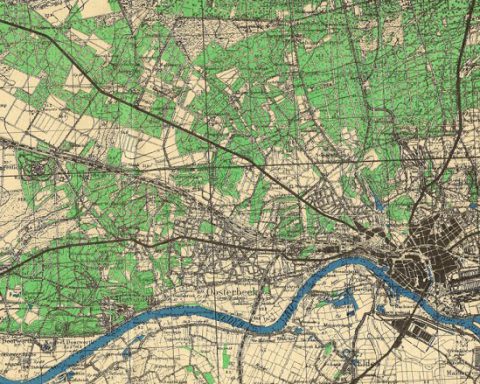While plans for Market Garden were being drawn up in England, the German army leadership had its own thoughts about how the Allies would like to advance in early September. Field Marshal Walter Model, the German commander-in-chief in the area, was firmly convinced that the Allies would attempt to break through the Siegfried Line east of Roermond.
In August 1944, the German front in France completely collapsed. German troops fled to the north and east, while being pursued by the Allies. That flight came to an end at the end of August. The Allied troops were without fuel and ammunition. Forced by their long supply lines, they were forced to halt temporarily.
After the war, the German SS General Rauter stated that there were large gaps in the German lines at that time.
“The German 15th Army was stuck near the coast in Zeeland. The other troops fled in an easterly direction. Between the two there was an unoccupied strip that widened every hour. If Montgomery had dared, he could have gone all the way to Amsterdam without encountering any resistance.”
However, the Allies stopped at the Belgian-Dutch border. The Germans used that breathing space to restore the German defense line. While the Germans were doing this and the Allied troops were being reequipped, the German side wondered what the Allies were up to.
The English and Americans were preparing Operation Market Garden at the time, but the German army leadership thought that the Allies had other plans. Field Marshal Walter Model did not consider airborne landings near Arnhem and Nijmegen to be realistic. According to the German army leadership, Arnhem was too far from the front.
“We would have destroyed the airborne troops long ago before the Allied ground troops could relieve them,” Model told General Rauter, who was based in Arnhem, a few days before the start of Operation Market Garden.
But the Germans were convinced that airborne troops would play an important role in the Allied attack that was planned. That was not a strange conclusion. The Germans knew that there was an impressive airborne army in England, consisting of no fewer than four airborne divisions. The Americans had the 82nd and 101st Airborne Divisions ready in England, while the British had the 1st and 6th Airborne Divisions ready. Together, the more than 40,000 elite troops of these divisions formed the 1st Allied Airborne Army.
The Germans also knew from experience that the Allies liked to make use of these elite troops. Landings of airborne troops had been part of all major Allied operations of the previous years: North Africa, Sicily and D-Day. It would be strange if the airborne divisions were not used now, Field Marshal Model concluded.
Model thought that the 2nd British Army, which was at that time near Neerpelt on the Belgian-Dutch border, would initially advance north. The main force would then move east across the Maas at Roermond and attack the weakly defended Siegfried Line. The 2nd British Army would reach the Rhine approximately at Düsseldorf.
At that moment the airborne divisions east of the Rhine near Düsseldorf would be thrown off, Model thought. The airborne troops would form a bridgehead on the east side of the Rhine near Düsseldorf while Allied engineers would build bailey bridges over the Rhine so that tanks could advance.
Model was so convinced that this was how the Allies would attack that on September 14, 1944, he put his message into an imaginary order from Eisenhower, which read something like this:
“The 2nd British Army will concentrate its parts on the Albert Canal and on the Scheldt-Maas Canal. On its right wing it will form an attack force, largely composed of armored troops. After forcing a Meuse crossing, it will launch an operation to break through to the Reinisch-Westphalian Industrial region, with the main direction towards Roermond.
To protect the northern flank, the left wing of this army will close the Waal near Nijmegen, thus creating the conditions to cut off the German troops that are still in the coastal region.
In conjunction with these operations, a mass landing of Fallschirmjäger of the 1st Allied Airborne Army will take place north of the Lippe in the region south of Munster at a date to be determined later.”
From this message, which Model sent to his troops a few days before Market Garden, it is clear that the Germans were not expecting any major operations around Arnhem and Nijmegen. For that reason, Model chose to establish his headquarters in the quiet and lovely Oosterbeek: far away from the enemy, behind three wide rivers…






